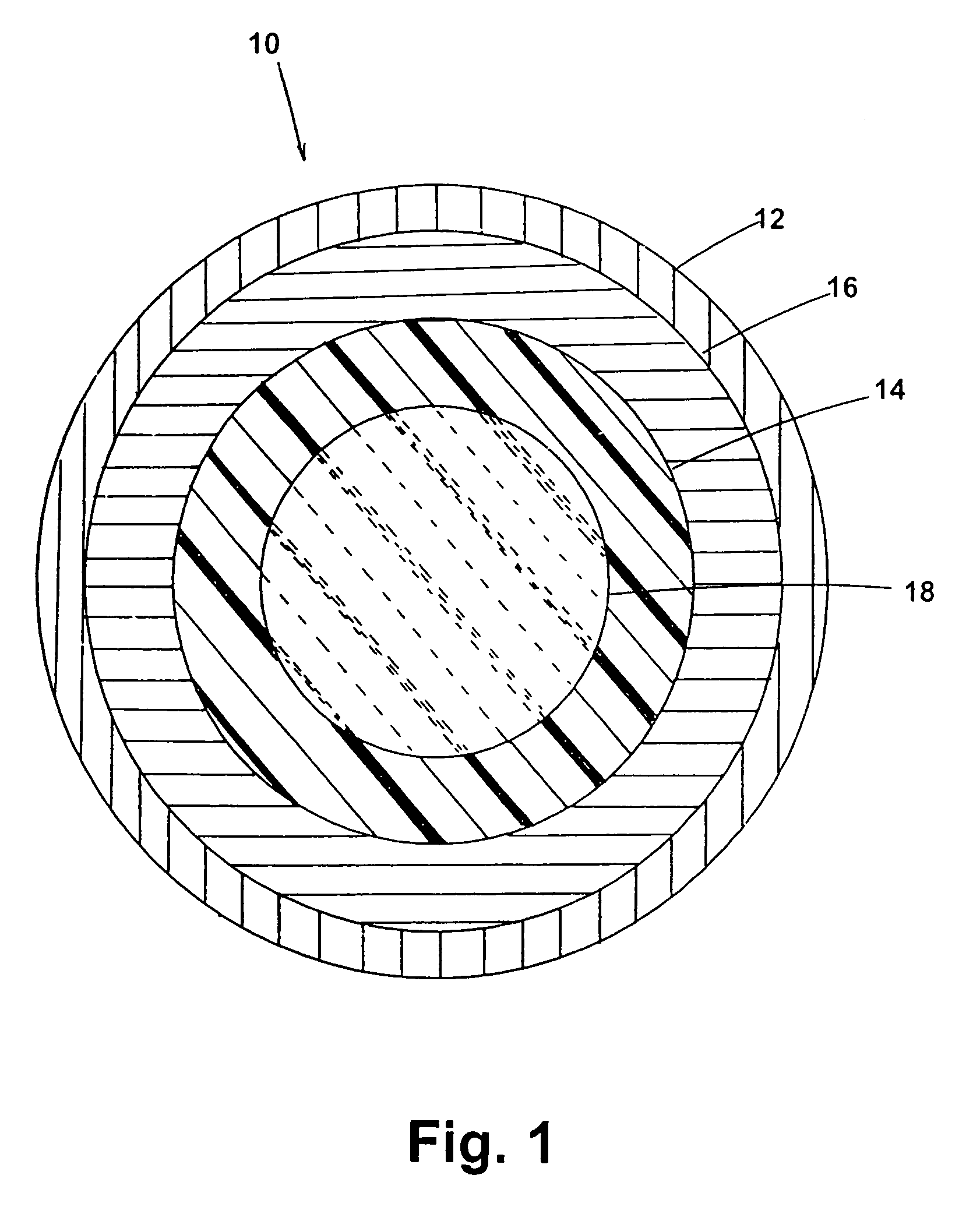Golf balls with thermoplastic silicone-urethane copolymers
a thermoplastic silicone and copolymer technology, applied in golf balls, solid balls, sports equipment, etc., can solve the problems of low-moderate tensile strength, difficult to feel two-piece balls, and require covalent cross-linking, so as to maximize the strength of each material
- Summary
- Abstract
- Description
- Claims
- Application Information
AI Technical Summary
Benefits of technology
Problems solved by technology
Method used
Image
Examples
examples
[0042]Golf balls of the present invention can be manufactured by numerous methods. The core may be made by methods well known in the art, by using either a conventional wound core construction, or a conventional solid construction of one or more layers. The wound core construction can be either a solid rubber-based center or a liquid filled center, around which a length of elastic thread is wound. A conventional solid construction preferably comprises a cis 1,4 polybutadiene rubber that has been cross-linked with a metal salt of an unsaturated fatty acid such as zinc diacrylate. A conventional multi-layer construction may include multi-layered cores of different polybutadiene based materials to form inner and outer layers.
[0043]These core constructions are then covered using conventional compression molding, or injection molding or casting techniques with a cover formulation containing a thermoplastic silicone-urethane copolymer as discussed above. There are many methods to utilize ...
PUM
| Property | Measurement | Unit |
|---|---|---|
| thickness | aaaaa | aaaaa |
| elongation | aaaaa | aaaaa |
| tensile strength | aaaaa | aaaaa |
Abstract
Description
Claims
Application Information
 Login to View More
Login to View More - R&D
- Intellectual Property
- Life Sciences
- Materials
- Tech Scout
- Unparalleled Data Quality
- Higher Quality Content
- 60% Fewer Hallucinations
Browse by: Latest US Patents, China's latest patents, Technical Efficacy Thesaurus, Application Domain, Technology Topic, Popular Technical Reports.
© 2025 PatSnap. All rights reserved.Legal|Privacy policy|Modern Slavery Act Transparency Statement|Sitemap|About US| Contact US: help@patsnap.com

